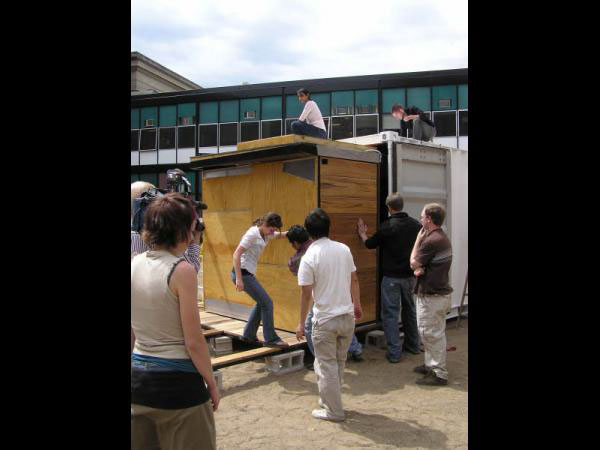Clean Hub
Architecture for Humanity-University of Minnesota Studio 2007
The Clean Hub, “a new prototype for sustainable infrastructure” conceived by Shelter Architecture in collaboration with Architecture for Humanity, and designed and built by architecture students from the University of Minnesota, is a breath of fresh air in an often-luxury prefab world. One of the finalists in American Express’ Members Project the freestanding module delivers completely off-the-grid infrastructure, from clean water and sanitation to renewable power to disaster areas or rural locations without access to such resources.
CLEAN HUB | Inhabitat
CLEAN HUB | Inhabitat
In refugee camps and areas affected by natural disaster, a common policy exists that most structures or improvements must be temporary, even though they may be used for decades. As a result, infrastructure systems are designed to last only a few months, resulting in substandard living conditions. Today, this condition adversely effects over 170 million people worldwide. The Clean Hub is a portable, self sustaining source for clean water, electricity and sanitation. Designed within an intermodal shipping container, the Clean Hub can be fabricated, shipped and deployed anywhere in the world in a matter of days. In keeping with all policies, it can be deemed portable, but since it is self sustaining, it can function in one place for as long as necessary with minimal maintenance. The Clean Hub uses a photovoltaic array with battery storage, a 4,400 gallon water reservoir, a rainwater catchment system, ceramic and reverse osmosis filtration, and composting toilets.







The Clean Hub nearing its final resting place in the 9th Ward.

Myself along with studio classmates and instructors (John Dwyer & Tom Westbrook) after the completion and presentation of our Clean Hub project.
